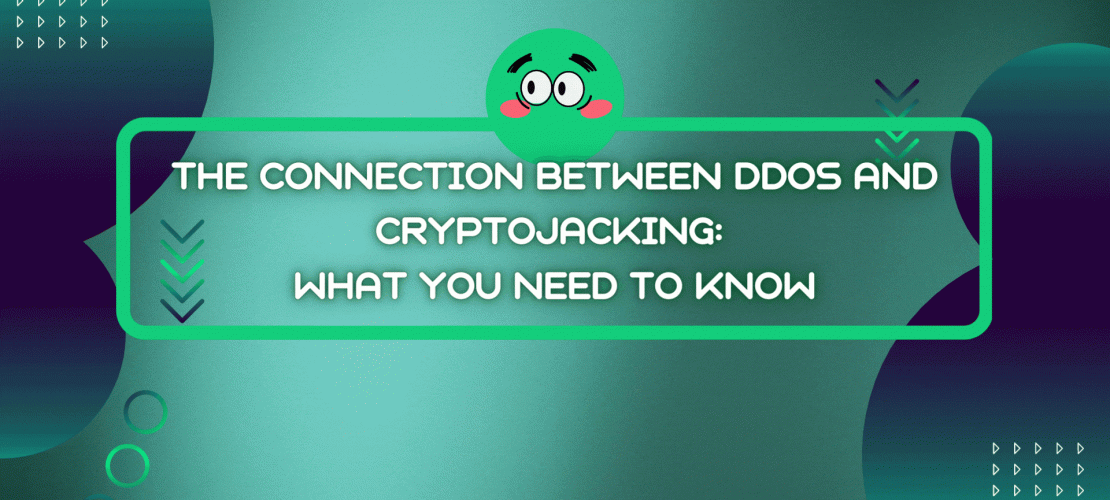With the rise of cryptocurrencies, the cybercriminals have found new ways to exploit the digital world. One such way is through a technique called cryptojacking, where a hacker uses someone’s computer or device to mine cryptocurrency without their knowledge or consent. At the same time, Distributed Denial of Service (DDoS) attacks have been around for a long time and continue to evolve, becoming more sophisticated and more challenging to detect and mitigate. This blog post will explore the connection between DDoS and cryptojacking and what you need to know to protect yourself and your organization.
What is Cryptojacking?
Cryptojacking is a relatively new type of cyber attack that involves the unauthorized use of someone else’s computer or device to mine cryptocurrency. In other words, cybercriminals use the processing power of a victim’s device to solve complex mathematical problems and generate new units of cryptocurrency.
Cryptojacking can occur through various means, such as malicious software or scripts embedded in websites or emails. Victims of cryptojacking may notice a slowdown in their device’s performance or increased energy consumption.
What is DDoS?
Distributed Denial of Service (DDoS) attacks are a type of cyber attack in which a targeted system or network is flooded with traffic, rendering it inaccessible to its users. DDoS attacks can be carried out in various ways, such as through the use of botnets, amplification attacks, and application-layer attacks.
The main goal of a DDoS attack is to disrupt the normal functioning of a system or network, causing downtime and financial losses. DDoS attacks have been around for many years and have evolved in sophistication and intensity, making them even more dangerous and damaging.
The Connection Between DDoS and Cryptojacking
DDoS and cryptojacking may seem like two unrelated types of attacks, but they are increasingly being combined by cybercriminals. The connection between DDoS and cryptojacking lies in the fact that DDoS attacks can be used to distract and mask cryptojacking activities.
For example, cybercriminals may launch a DDoS attack against a cryptocurrency exchange to divert attention from a cryptojacking campaign. The DDoS attack would cause the exchange’s system to slow down or go offline, making it difficult for security teams to detect and respond to the cryptojacking activity.
In another scenario, cybercriminals may use a DDoS attack to test a victim’s defenses and identify vulnerabilities that can be exploited for cryptojacking. Once the victim’s system has been compromised, the cybercriminals can launch a cryptojacking campaign and use the victim’s processing power to mine cryptocurrency without being detected.
The combination of DDoS and cryptojacking can also have other negative consequences, such as increased energy consumption, hardware damage, and the theft of sensitive information.
Protecting Against DDoS and Cryptojacking
To protect against the combination of DDoS and cryptojacking attacks, organizations need to implement a multi-layered approach to security. This approach should include the following:
- DDoS protection: Organizations should deploy DDoS protection solutions that can detect and mitigate DDoS attacks in real-time. These solutions should be able to identify and block different types of DDoS attacks, such as volumetric, application-layer, and protocol attacks.
- Cryptojacking detection: Organizations should implement tools that can detect and prevent cryptojacking activities. These tools can include endpoint protection solutions, web filters, and intrusion detection systems.
- Network segmentation: Organizations should implement network segmentation to limit the impact of a successful attack. This can involve dividing the network into smaller segments with restricted access, so that an attack on one segment does not affect the entire network.
- Regular updates: Organizations should ensure that their security solutions are up-to-date and receive regular updates. This can help to protect against new and emerging threats, including the combination of DDoS and cryptojacking.
Conclusion
As the use of cryptocurrencies continues to grow, so does the threat of cryptojacking. The rise of cryptojacking has also been accompanied by an increase in DDoS attacks, as attackers use these attacks as a distraction or a means to overload security systems.
It is important for businesses to be aware of the connection between cryptojacking and DDoS attacks and to take steps to protect themselves. This includes keeping software up to date, using reputable antivirus software, educating employees, and implementing network security measures. By taking these steps, businesses can reduce their risk of falling victim to these types of attacks and protect their valuable data and resources.





One Response
It is very useful information for cryptopreneurs